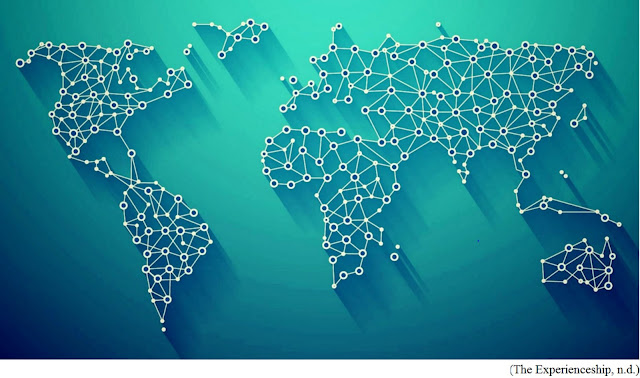At the start of this term in Year 6 Tyrrell, we
embarked on a new journey of Civics and Citizenship Education (CCE) that is focused
on developing student’s understandings of what it means to be a global citizen.
By using the ‘poster design to change the world’ resource by Oxfam (2016),
students’ will develop an awareness of what global citizenship is through
inquiry based learning. The overall purpose for this allows students to
identify an issue that affects them locally, and use change action to address
it in an informative poster.
In three sections divided equally over 6 weeks,
students will explore what a global citizen is and what makes a successful
campaign poster (weeks 1/2); global issues and history of the Oxfam poster (weeks
3/4); and the design brief (weeks 5/6). Within this, students use guided
discussions, debates, independent studies, and collaborative learning to
develop their questioning, researching,
evaluating and reflecting and communicating skills. They also use solution
fluency to develop critical and creative
thinking and personal and social
capability by having to visualise possibilities, create, and then deliver a
solution (Global Digital Citizen Foundation, 2017).
Throughout this week (2) and last (1), students explored
the definition of a global citizen and examined successful campaign posters that
present ideas, shift opinions, educate, and persuade audiences. Students gave
excellent responses to what they think a global citizen is and made PMI charts
after learning about and discussing successful posters.
In the coming weeks (3/4) students will explore larger-scale
topics like poverty and world hunger to broaden their mindset and initiate
thinking about topics that may not affect them directly, but occur throughout
the world we live in (OXFAM, 2016).
This links to the three domains that global citizenship
education aims to address, which are complimented by corresponding learning attributes
and key learner outcomes shown in nine topic areas (UNESCO, 2015).
Like adults, young people enjoy seeing an outcome from
their hard work but need to start at a smaller level (Department of Education
USA, n.d.). In the last two weeks of this unit (5/6), students will identify an
issue that affects them in the community, research the topic and address it in
a poster that presents their ideas and a solution or suggestion to address the
issue on a small-scale. This encourages them to start small within their local
community and then expand to a greater region (Department of Education USA,
n.d.).
To be effective global citizens, young people need to
be flexible, creative, proactive; able to solve problems, make decisions, think
critically, communicate ideas effectively and work well with others (IDEAS,
2017). These skills and attributes are recognised as essential for students to
succeed in other areas of 21st century life, and are recognised under the
‘Active and Informed Citizens’ strand of Goal 2 in the Melbourne Declarations
on Educational Goals for Young Australians (Ministerial Council for Education,
Employment, Training and Youth Affairs [MCEETYA], 2008).
By using CCE to encourage your children to think
globally act locally, it builds their commitment to civic life, develops their
understandings of issues on multiple levels and forms their responsibility to
be an active citizen (Department of Education USA, n.d.).
References
Department of Education USA. (n.d.). Think globally, act locally. Retrieved
from https://y4y.ed.gov/learn/pbl/implementation/think-globally-act-locally
International Development Education
Association of Scotland. (2017). What is
global citizenship. Retrieved from http://www.ideas-forum.org.uk/about-us/global-citizenship
Global Digital Citizen Foundation. (2017).
Solution fluency. Retrieved from https://globaldigitalcitizen.org/21st-century-fluencies/solution-fluency
Ministerial Council for Education,
Employment, Training and Youth Affairs. (2008). The Melbourne declaration on educational goals for young Australians. Retrieved
from http://www.curriculum.edu.au/verve/_resources/National_Declaration_on_the_Educational_Goals_for_Young_Australians.pdf
Oxfam. (2016). Poster design to change the world - Primary school resource: Teachers
handbook. Retrieved from https://www.oxfam.org.au/wp-content/uploads/2016/11/Poster-Design-to-Change-the-World-downloadable-PDF-copy-primary.pdf
UNESCO. (2015). Global citizenship education: Topics and learning objectives.
Retrieved from http://unesdoc.unesco.org/images/0023/002329/232993e.pdf
Images
Australian Curriculum, Assessment and
Reporting Authority. (2017a). Curriculum:
F-6/7 HASS [image]. Retrieved from http://www.australiancurriculum.edu.au/humanities-and-social-sciences/hass/curriculum/f-10?layout=1#yl-6
Australian Curriculum, Assessment and
Reporting Authority. (2017b). General
Capabilities [image]. Retrieved from http://www.australiancurriculum.edu.au/generalcapabilities/overview/introduction
Brew, P. (2015). Real Australians say welcome [image]. Retrieved from https://pozible.com/project/183878
International Development Education
Association of Scotland. (2017). What is
global citizenship [image]. Retrieved from http://www.ideas-forum.org.uk/about-us/global-citizenship
Miller, J. (1942). Rosie the Riveter [image]. Retrieved from http://www.pophistorydig.com/topics/rosie-the-riveter-1941-1945/
Ministerial Council for Education,
Employment, Training and Youth Affairs. (2008). The Melbourne declaration on educational goals for young Australians
[image]. Retrieved from http://www.curriculum.edu.au/verve/_resources/National_Declaration_on_the_Educational_Goals_for_Young_Australians.pdf
The Experienceship. (n.d.). Hello world [image]. Retrieved from http://theexperienceship.com/
UNESCO. (2015). Global citizenship education: Topics and learning objectives [images]. Retrieved
from http://unesdoc.unesco.org/images/0023/002329/232993e.pdf
WWF. (2009). Lungs [image]. Retrieved from http://adsoftheworld.com/media/print/wwf_lungs







No comments:
Post a Comment